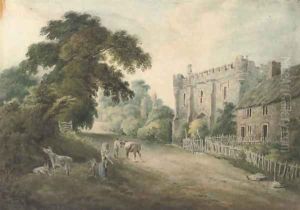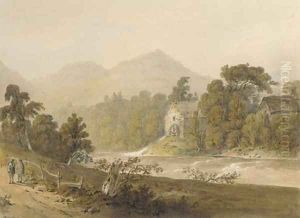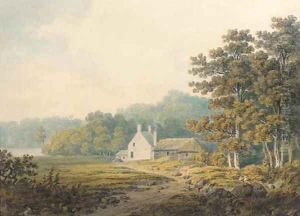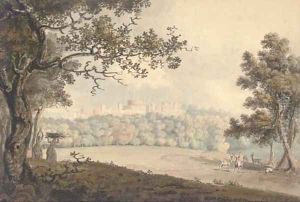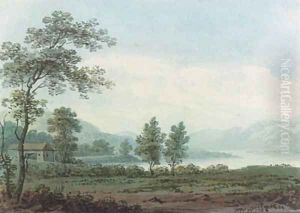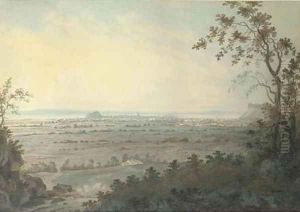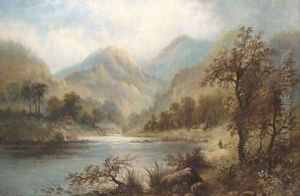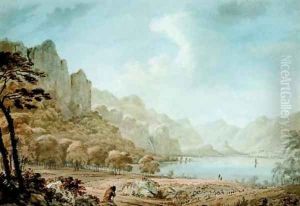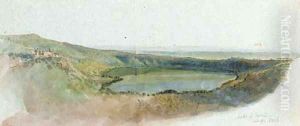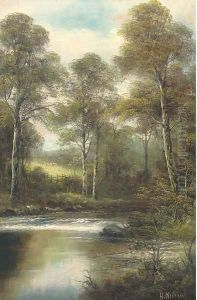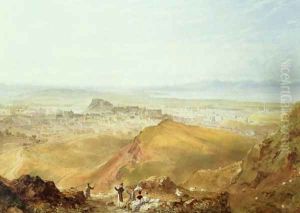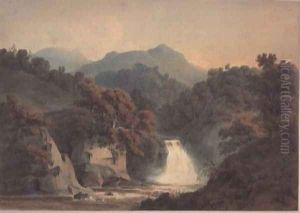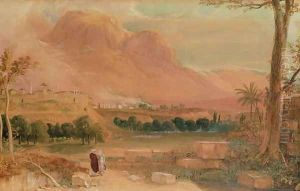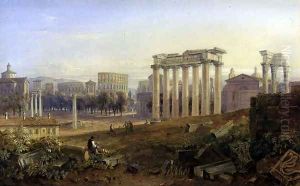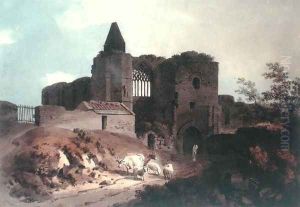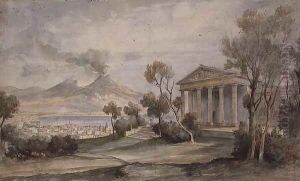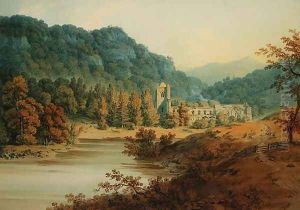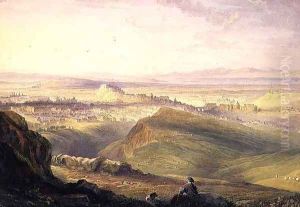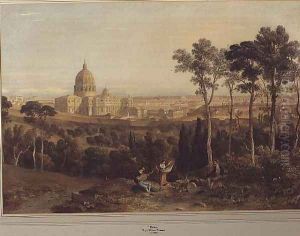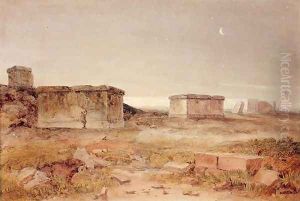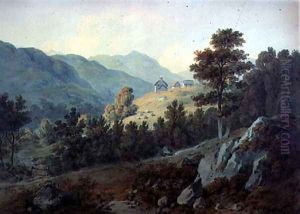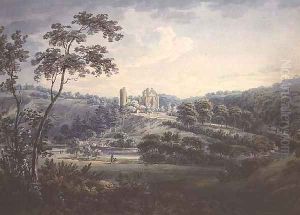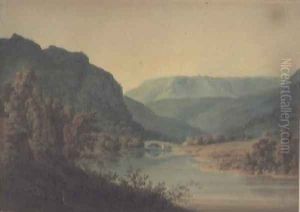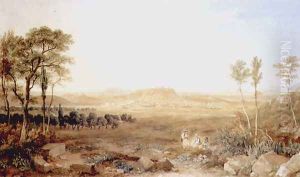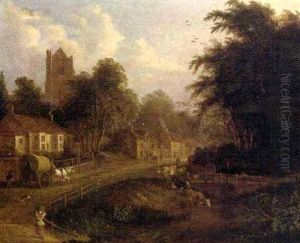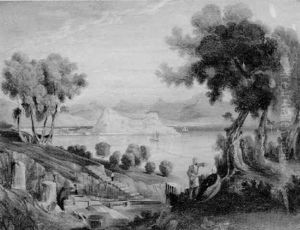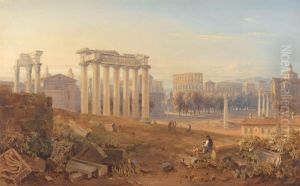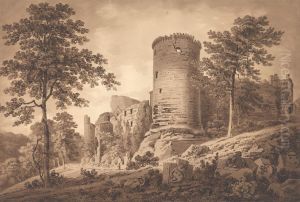Hugh William Williams Paintings
Hugh William Williams, often referred to as 'Grecian Williams' due to his affinity for Greek landscapes, was a notable Scottish painter and watercolourist from the 18th and early 19th centuries. Born in 1773, Williams is particularly renowned for his picturesque landscapes and views, many of which were influenced by his travels through Europe, especially in Greece.
Williams began his artistic career in Edinburgh, where he studied and practiced his craft. He was associated with the golden age of British watercolor painting, along with artists such as Turner and Girtin. His work was marked by a meticulous attention to detail and a delicate handling of light and color, which earned him considerable recognition during his lifetime.
In 1816-1818, Williams embarked on a tour of the Continent, which greatly influenced his subsequent work. His travels through Italy and, most importantly, Greece, where he spent considerable time sketching the ruins and landscapes, brought a new dimension to his art. The sketches and paintings from this period not only reflect his personal experience of the Grand Tour—a tradition among the British elite—but also represent a significant contribution to the visual documentation of Greek antiquity at a time before widespread photography.
After returning to Britain, Williams published a series of works based on his travels, including 'Select Views in Greece' with accompanying descriptive text. These publications were well-received and enhanced his reputation as a leading landscape painter of his time. Despite the popularity of his Greek landscapes, Williams also produced a range of works depicting Scottish scenery, contributing to the burgeoning appreciation of the natural beauty of his homeland.
Hugh William Williams continued to paint and exhibit his work until his death in 1829. His legacy is preserved in the collections of various art institutions, and his contributions to the art of watercolor and landscape painting are still recognized by scholars and enthusiasts of the genre.

